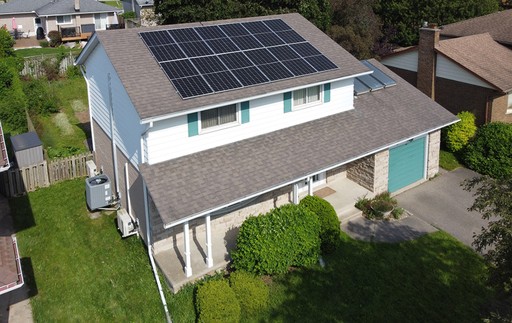Back to Index
Solar energy is one of the cleanest forms of renewable energy and has a significant positive impact on the environment:
1. Reduction in Carbon Emissions: Solar panels produce clean energy during peak times. This reduces the grid’s dependence on fossil fuels, helping to offset significant amounts of carbon dioxide emissions over the system's lifetime.
2. Water Conservation: Solar power generation doesn’t require the large volumes of water that traditional power plants use for cooling.
3. Improved Air Quality: By reducing the need for fossil fuel energy, solar energy helps decrease air pollution, leading to healthier environments and communities.
4. Energy reduction: Many homes are able to switch from gas appliances and heating to electrical devices. These electrical devices are often more energy efficient, and can work in combination with solar systems to run on 100% clean, renewable energy. For example, some solar systems have a compatible EV charger so that you can charge your EV from excess solar energy that would otherwise be sent to the grid.
Energy Cost to Create a Solar Panel
The energy cost of manufacturing solar panels, known as the energy payback time (EPBT), varies depending on the type of solar technology used, the production methods, and the location of the installation. Here's a breakdown of the key points:
1. Manufacturing Process:
Silicon-based PV solar panels: The production of crystalline silicon solar panels typically requires a significant amount of energy, primarily from the extraction and processing of raw materials (silicon, glass, metals).
2. Energy Payback Time (EPBT):
For traditional crystalline silicon solar panels, the EPBT is generally 4 years, depending on the efficiency of the panel and the conditions of use. This means it takes this amount of time for the solar panel to generate the same amount of energy that was used in its manufacturing.
Source: Nature.com
Energy Produced Over Its Lifetime
1. Energy Production:
The total energy output of a solar panel depends on its efficiency, the amount of sunlight received, and environmental factors. For example, a typical residential solar panel with a capacity of about 300 watts can produce around 300 kWh to 500 kWh per year, depending on location. For example 150-500 kWh would represent operating the average refrigerator for one year. Find more energy stats on the energystar website.
2. Total Energy Yield:
Over its lifetime, a solar panel can generate anywhere from 7,500 kWh to 15,000 kWh over a 25-30 years, again depending on efficiency and location.
In general, the energy produced by solar panels over their lifetime greatly exceeds the energy required for their manufacturing. For instance, a typical solar panel may generate 10 to 20 times more energy than was used to create it. This energy surplus, combined with the decreasing cost of solar technology and increasing efficiency, makes solar energy a sustainable and environmentally friendly option.
Source:Wikipedia, Energystar
Solar 101: Everything you Need to Know

Residential Systems
What components are needed for a residential system?
Net Metering
Learn how net metering works and how it can save up to 90% from your energy bill.
What level of service or maintenance is required with solar installations?

What is the impact of solar panels on the environment.
Commercial Systems
What to expect when installing a commercial system.

Agricultural Systems
What do you need to consider before choosing a solar company for the farm?
Battery Backup
Should I get a solar battery for my home? Decide if the battery option is right for you.






